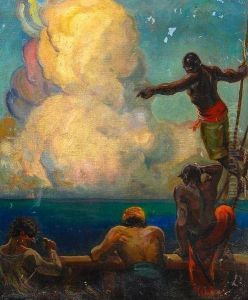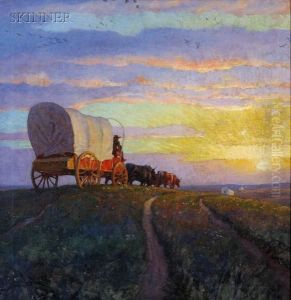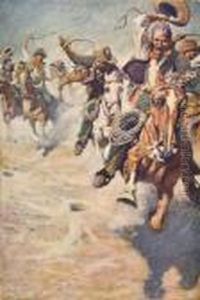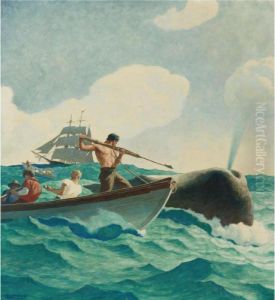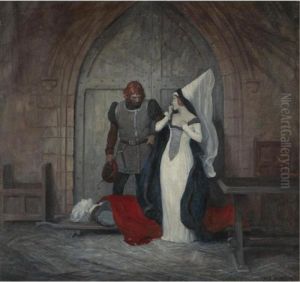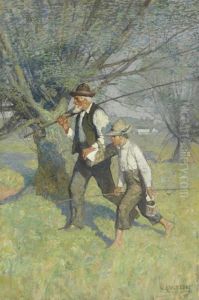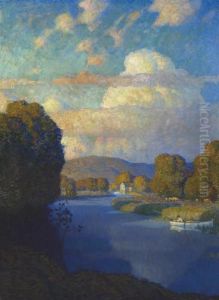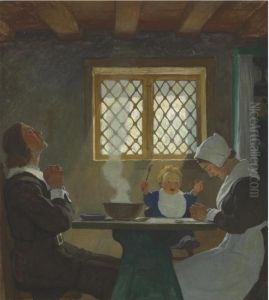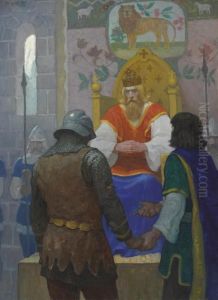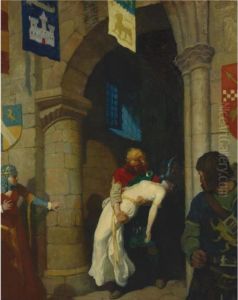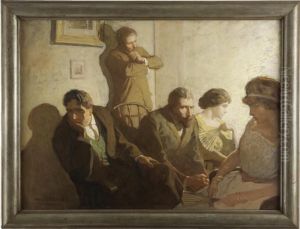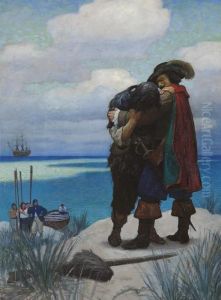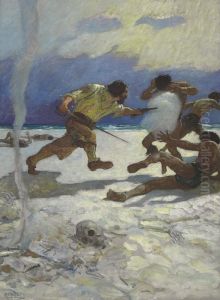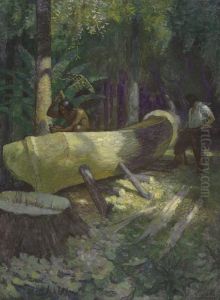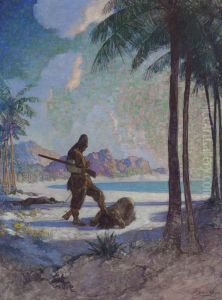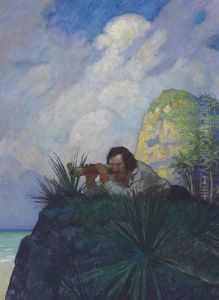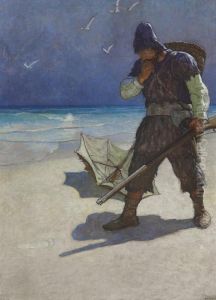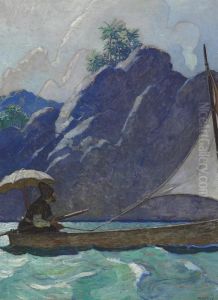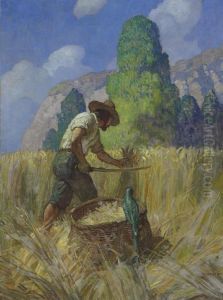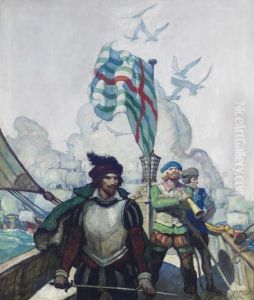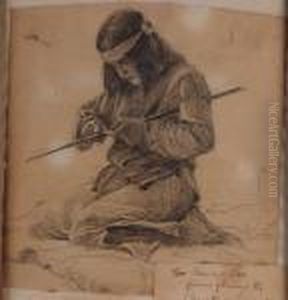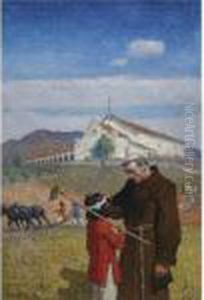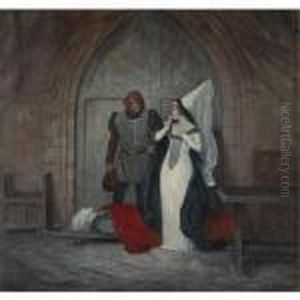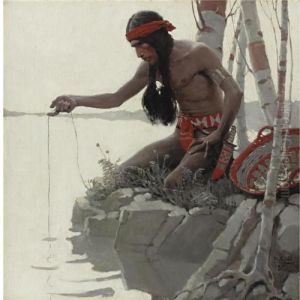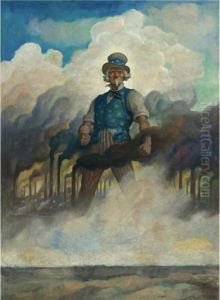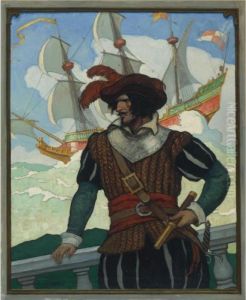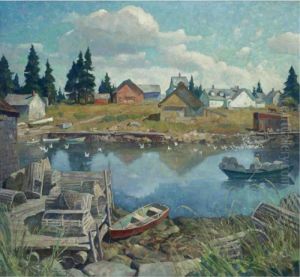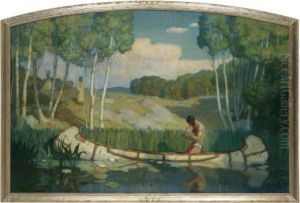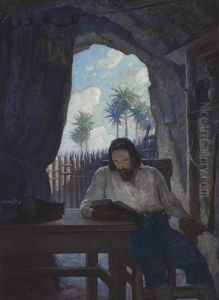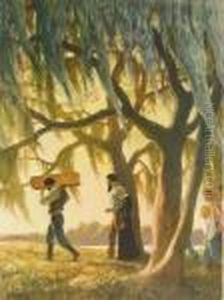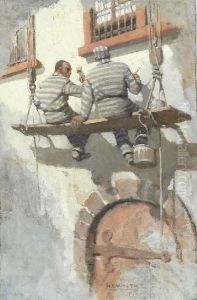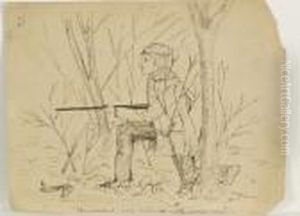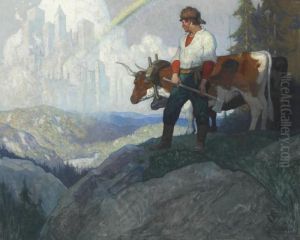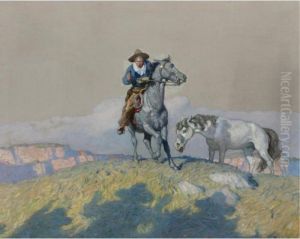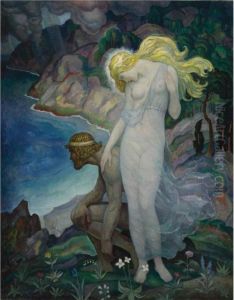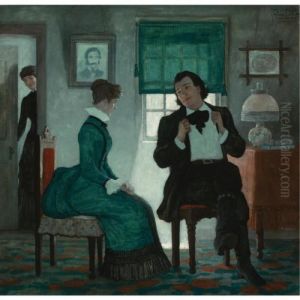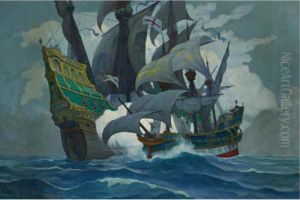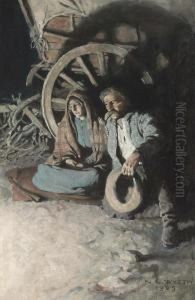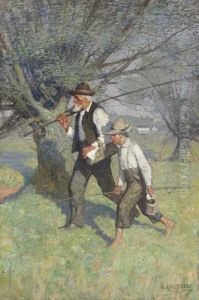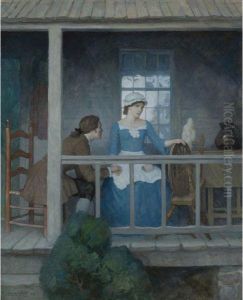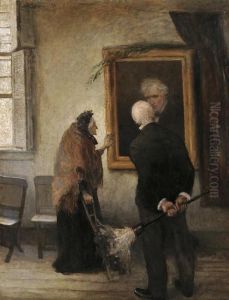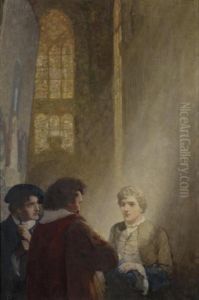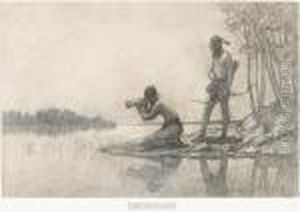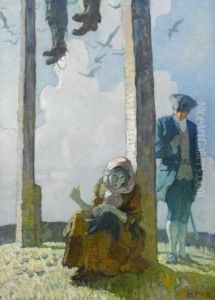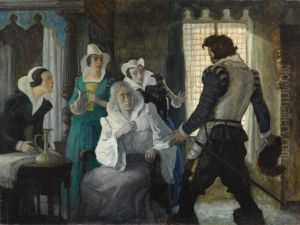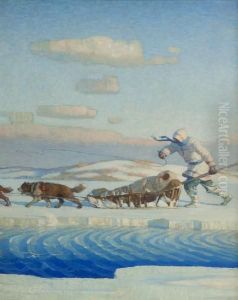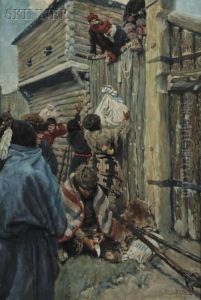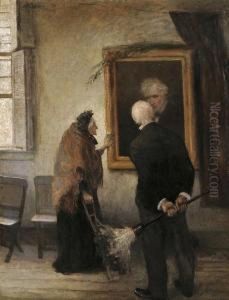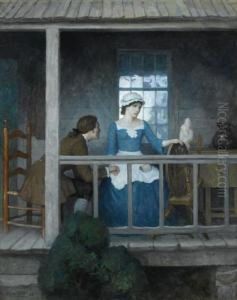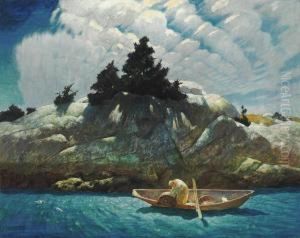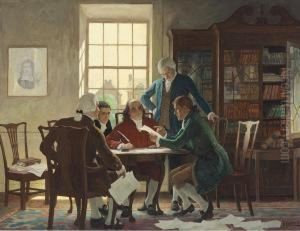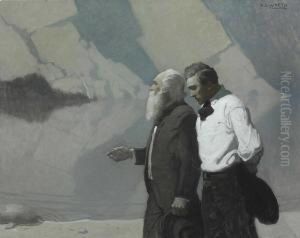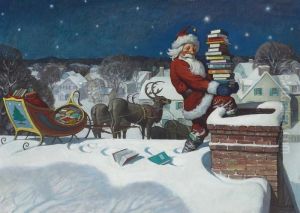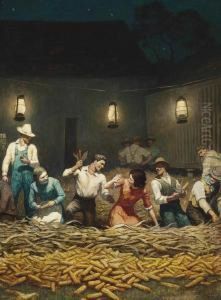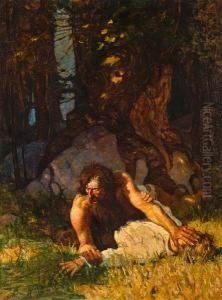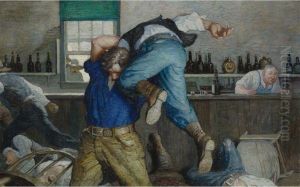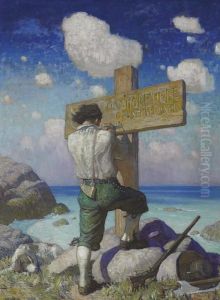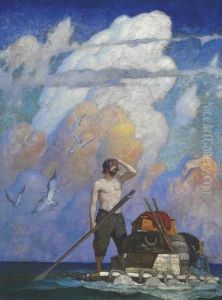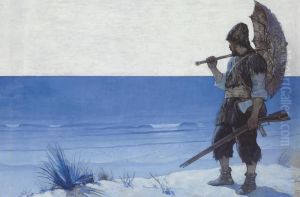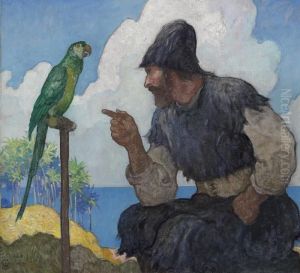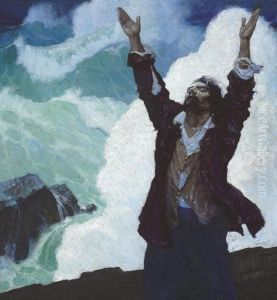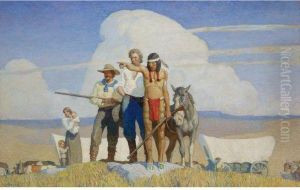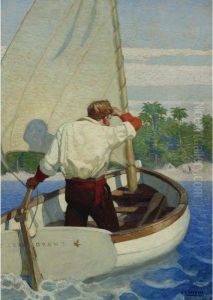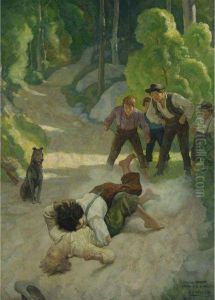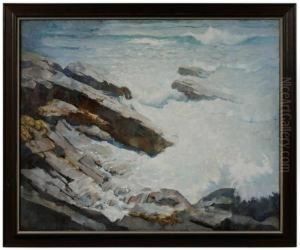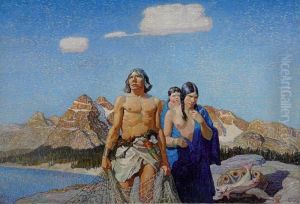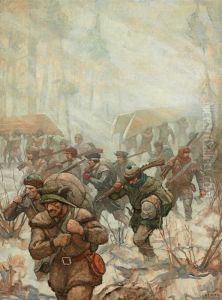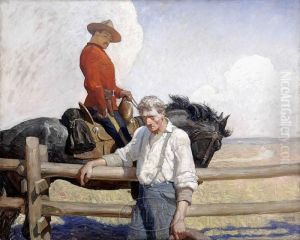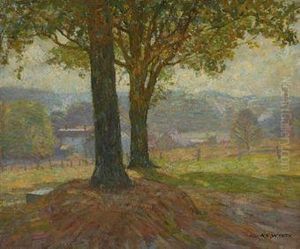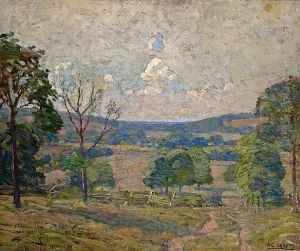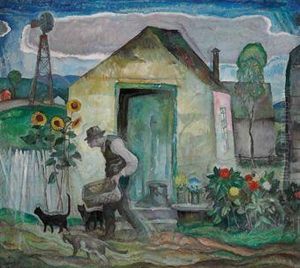Newell Convers Wyeth Paintings
Newell Convers Wyeth, known as N.C. Wyeth, was an American artist and illustrator born on October 22, 1882, in Needham, Massachusetts. He was the eldest son of Andrew Newell Wyeth and Henriette Zirngiebel Wyeth. Wyeth developed an early interest in art, which was nurtured by his mother, a talented amateur painter herself. He attended the Mechanic Arts High School, where he received his first formal art training.
In 1902, at the age of twenty, Wyeth ventured to Wilmington, Delaware, to study with the famed illustrator Howard Pyle. Under Pyle's mentorship, Wyeth learned the techniques of illustration that would define his career. Pyle emphasized the importance of living the scenes before painting them, which led Wyeth to experience the subjects of his illustrations firsthand. This immersive approach significantly influenced his dynamic and vivid style.
Wyeth quickly rose to prominence with his powerful illustrations for magazines such as 'The Saturday Evening Post' and 'Harper's Monthly.' His illustrations for adventure stories and historical novels are particularly renowned. In 1911, he illustrated his first of many classic children's books, 'Treasure Island' by Robert Louis Stevenson. This project, along with his subsequent work on other classics such as 'Kidnapped,' 'Robin Hood,' 'The Last of the Mohicans,' and 'Robinson Crusoe,' cemented his reputation as a leading illustrator of his time.
Beyond his work as an illustrator, N.C. Wyeth was also a notable painter of landscapes, portraits, and murals. He had a deep love for the Brandywine Valley, where he lived for most of his life, and this affection was reflected in many of his landscape paintings. His murals can be found in public buildings and institutions across the United States.
Wyeth's personal life was marked by both success and tragedy. He married Carolyn Bockius of Wilmington, and together they had five children, including the well-known artist Andrew Wyeth and the inventor Nathaniel C. Wyeth. In 1945, at the age of 62, N.C. Wyeth and his grandson Newell were tragically killed when their car was struck by a train at a railway crossing near his home in Chadds Ford, Pennsylvania.
N.C. Wyeth left behind a substantial body of work that continues to be celebrated for its narrative power, vibrant color, and emotional depth. His legacy endures not only through his own artwork but also through the artistic dynasty he founded with his children and grandchildren, who have continued to contribute significantly to American art.
